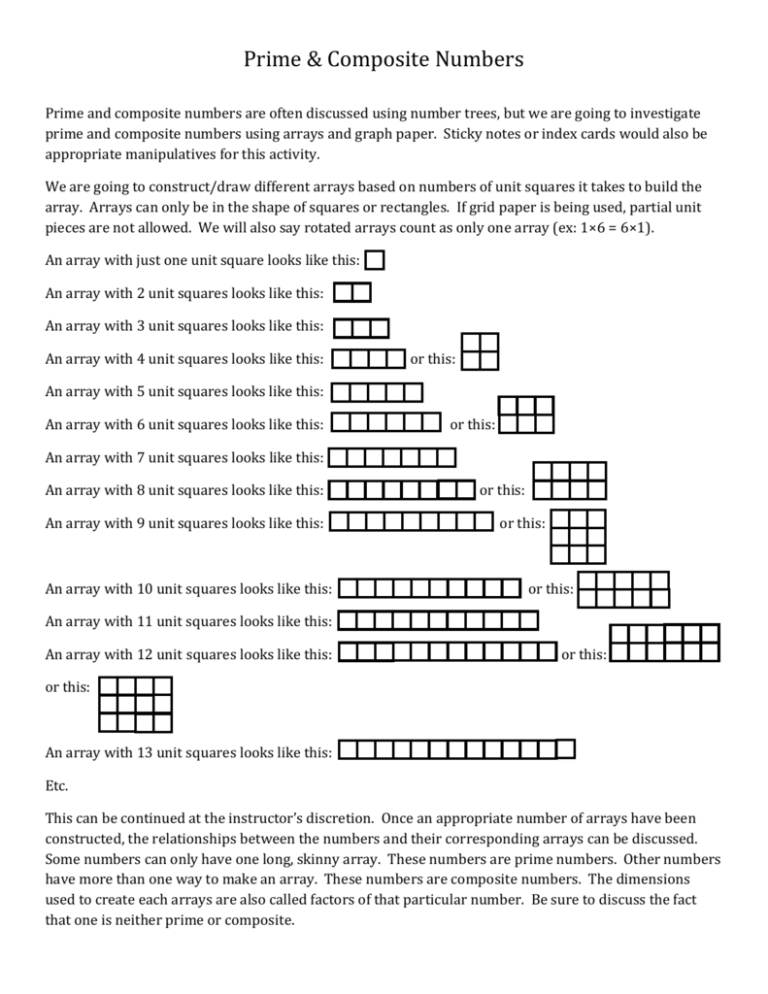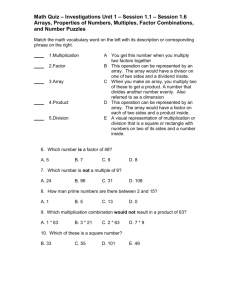Prime & Composite Numbers
advertisement

Prime & Composite Numbers Prime and composite numbers are often discussed using number trees, but we are going to investigate prime and composite numbers using arrays and graph paper. Sticky notes or index cards would also be appropriate manipulatives for this activity. We are going to construct/draw different arrays based on numbers of unit squares it takes to build the array. Arrays can only be in the shape of squares or rectangles. If grid paper is being used, partial unit pieces are not allowed. We will also say rotated arrays count as only one array (ex: 1×6 = 6×1). An array with just one unit square looks like this: An array with 2 unit squares looks like this: An array with 3 unit squares looks like this: An array with 4 unit squares looks like this: or this: An array with 5 unit squares looks like this: An array with 6 unit squares looks like this: or this: An array with 7 unit squares looks like this: An array with 8 unit squares looks like this: An array with 9 unit squares looks like this: An array with 10 unit squares looks like this: or this: or this: or this: An array with 11 unit squares looks like this: An array with 12 unit squares looks like this: or this: or this: An array with 13 unit squares looks like this: Etc. This can be continued at the instructor’s discretion. Once an appropriate number of arrays have been constructed, the relationships between the numbers and their corresponding arrays can be discussed. Some numbers can only have one long, skinny array. These numbers are prime numbers. Other numbers have more than one way to make an array. These numbers are composite numbers. The dimensions used to create each arrays are also called factors of that particular number. Be sure to discuss the fact that one is neither prime or composite.







